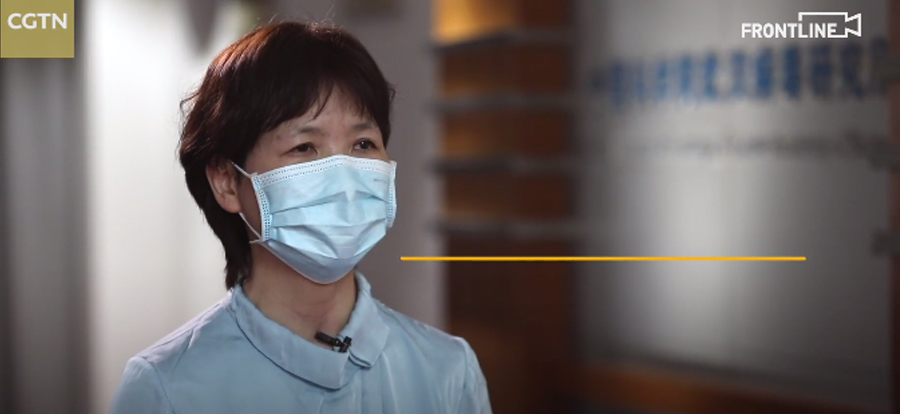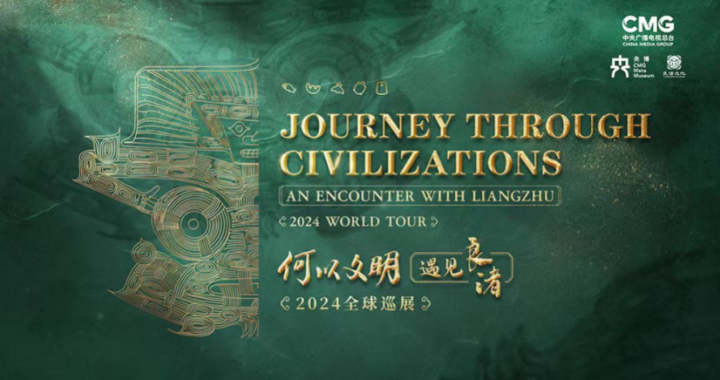The story of COVID-19 in the words of Wuhan lab expert

Kathmandu| 2020-05-25 (CGTN)
The Wuhan Institute of Virology has been in the eye of the storm since the novel coronavirus disease, later known as COVID-19, engulfed the world. Leaving almost nowhere untouched, the virus of unknown etiology has so far infected over 5 million people globally, with a death toll exceeding 338,000. It has forced shutdowns worldwide, crippling economies and upending lives overnight.
Since the first known cases were reported last December, scientists have raced to find the origins of the virus in the hope of developing a vaccine. In the meantime, a blame game is going on, with conspiracy theories ranging from the virus “leaking” from the Wuhan Institute of Virology to China “concealing” crucial information, despite repeated claims from scientists that it originated from nature.
CGTN spoke to three top epidemiologists from the institute to get their take on these rumors, how they view the outbreak and progress on cooperating with their international counterparts. The following interview with Shi Zhengli (Shi), a virologist and researcher at the institute, is the second in this series. You can read the first story here.
CGTN: Per reports, it was on December 30, 2019 that your team first obtained samples of the novel coronavirus. What have you done since then for identifying the pathogen?
Shi: We obtained samples on the afternoon of December 30, 2019, and our team first carried out coronavirus studies on the samples, which were thought to be from an unexplained case of pneumonia, since my laboratory has long been researching on coronaviruses. Meanwhile, we performed high-throughput sequencing of the samples and the isolation of pathogens. And then in a very short time, we identified that this was a new type of coronavirus in these samples. We obtained its whole genome sequence. It showed that the pathogen’s sequence was not the same as the already existing viruses. So we named it a novel coronavirus. We, along with two other medical institutes in our country, submitted this genome sequence to the World Health Organization on January 12, 2020. At the same time, we also uploaded other sequences to a gene library called GISAID for governments and scientists around the world to identify pathogens and develop vaccines and screen drugs.
CGTN: Did your work come to an end after you finished genome sequencing and shared it with the world?
Shi: No. The work we did earlier is only part of the pathogen identification in which we can know its genetic information and what kind of virus it is. For pathogen identification, another important step is animal infection experiments. These experiments are actually part of what’s called Koch’s postulates. Only through animal infection experiments can we finally determine that a certain pathogen is the main cause of a certain disease. Since we have an animal model, we can use it to quickly do the experiments. We completed an animal infection experiment with transgenic mice on February 6. It showed the animal to be simulating some pneumonia symptoms consistent with those of humans infected with COVID-19. Then we completed the animal infection experiment with rhesus monkeys on February 9. Both the animal infection experiments showed that the coronavirus isolated by us was a cause of the unexplained pneumonia.
CGTN: How would you assess your work after the outbreak?
Shi: I think we have done a great job. I can say that in a very short period, we simultaneously carried out pathogen isolation, genome sequencing and animal infection experiments, and finished all this work without delay.
CGTN: You just mentioned that you and your team have more than 10 years of experience in studying coronaviruses. Is there any connection between that and the work done this time?
Shi: Very much so. We actually started to study bat coronaviruses in 2004. After 15 years, our team has gathered a large number of materials, technologies, methods and research platforms. A number of talented individuals have also joined our team. This has enabled us to understand the cause of the unexplained pneumonia in a very short time.
CGTN: How did this experience help you respond to the epidemic so quickly?
Shi: In 15 years of research, we’ve figured out ways to trace viruses such as SARS-CoV. Through tracing SARS, we have found that there is genetic diversity in nature. We call them SARS-related viruses. The discovery of such viruses made us wonder: Do other SARS-related viruses also pose potential risks to humans?
Therefore, we started studying the distribution and genetic background of the viruses. At the same time, we conducted molecular biology experiments in the laboratory to assess whether these SARS-related viruses carried by bats could cause cross-species infection.
This work actually provided us with good research experience and technical solutions. For example, it takes a long time to develop things like nucleic acid detection methods, antibody detection methods and virus isolation technologies. However, given our experience, we are able to complete pathogen identification when there is a sample.
CGTN: Have you and your team carried out any international cooperation? If so, what role did it play during the global fight against the pandemic?
Shi: Our original goal of international cooperation is to serve the health of all people around the world because we know emerging infectious diseases know no boundaries. It requires scientists and governments all over the world to be open, transparent and cooperative, working together to prevent and control new infectious diseases.
So in the very beginning, our goal was to cooperate. Through cooperation, we can achieve mutual benefit and understand the viruses as soon as possible. Apart from the laboratory work, sample collection and development of early warning models in the wild also require scientists from different fields and training experiences. One small team cannot do such work alone.
CGTN: The funding of some of these cooperative projects has been suspended. You must have learned that some of your partners have encountered such problems. What do you think about this?
Shi: I think that science has been politicized. It’s very regrettable. I believe scientists from around the world don’t want to see this. As I mentioned before, researches on infectious diseases must be open and transparent. For new infectious diseases, international cooperation can provide us with good technical support, which serves all mankind. So we feel it is very unfortunate. Right now it has little impact on my personal scientific research because my funding mainly comes from our government and the Chinese Academy of Sciences.
CGTN: Tell us about your upcoming major tasks.
Shi: Next, I will continue some of the previous work, such as exploring unidentified pathogens. There are many types of bats and other wild animals in nature [which could potentially be the carriers of many viruses]. The viruses that we have discovered are actually just the tip of the iceberg. If we want to protect humans from the outbreak of new infectious diseases, we must take the initiative to learn about these unknown viruses carried by wild animals and give early warnings. And we must store some drugs and detection reagents for future prevention and control.
CGTN: So you will continue to carry out such researches. Why?
Shi: These viruses exist in nature whether we admit it or not. If we don’t study them, there will possibly be another outbreak, and we wouldn’t know them. So the job we are doing now is to find the viruses before they find us.










